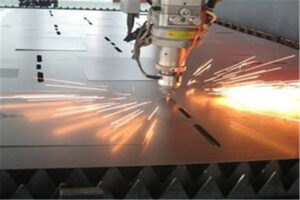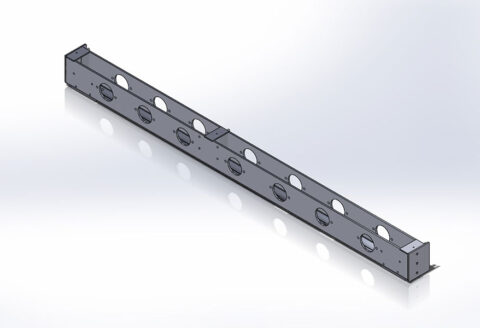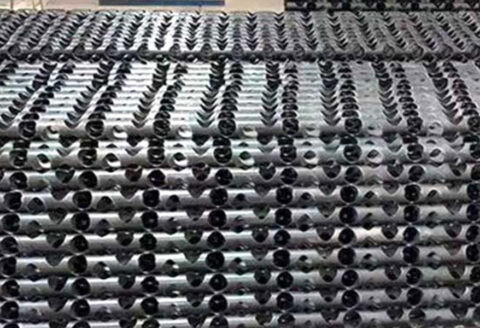Laser cutting is a thermal cutting method that uses a focused laser beam as the main heat source.
Compared with other thermal cutting methods, what are the advantages of laser cutting:
1. Good cutting quality
Due to the small laser spot, high energy density and fast cutting speed, laser cutting can obtain better cutting quality.
The laser cutting incision is narrow, the two sides of the incision are parallel and perpendicular to the surface, and the dimensional accuracy of the cut parts can reach ±0.05mm.
The cutting surface is smooth and beautiful, and the surface roughness is only tens of microns. Even laser cutting can be used as the last process without mechanical processing, and the parts can be used directly.
After the material is laser cut, the width of the heat-affected zone is very small, and the performance of the material near the slit is almost unaffected, and the deformation of the workpiece is small, the cutting accuracy is high, the geometric shape of the slit is good, and the cross-sectional shape of the slit is relatively regular. rectangle. The comparison of laser cutting, oxyacetylene cutting and plasma cutting methods is shown in Table 1. The cutting material is a 6.2mm thick mild steel plate.
2. High cutting efficiency
Due to the transmission characteristics of the laser, the laser cutting machine is generally equipped with multiple numerical control worktables, and the entire cutting process can be fully numerically controlled. During operation, only by changing the numerical control program, it can be applied to the cutting of parts of different shapes, which can be used for two-dimensional cutting and three-dimensional cutting.

3. Fast cutting speed
Using a laser with a power of 1200W to cut 2mm thick low-carbon steel plates, the cutting speed can reach 600cm/min; for 5mm thick polypropylene resin plates, the cutting speed can reach 1200cm/min. The material does not need to be clamped and fixed during laser cutting, which not only saves tooling and fixtures, but also saves auxiliary time for loading and unloading.
4. Non-contact cutting
There is no contact between the torch and the workpiece during laser cutting, and there is no tool wear.https://plasticmachiningservice.com/ Processing parts of different shapes does not need to change the “tool”, just change the output parameters of the laser. The laser cutting process has low noise, low vibration and no pollution.
5. There are many types of cutting materials
Compared with oxyacetylene cutting and plasma cutting, there are many types of laser cutting materials, including metal, non-metal, metal-based and non-metal-based composite materials, leather, wood, and fiber. But for different materials, due to their own thermophysical properties and different absorption rates for lasers, they show different laser cutting adaptability.
Our company is an enterprise specializing in laser cutting processing, spraying processing, and precision sheet metal processing. It has been in the industry for many years and has a relatively good reputation in the industry. It has comprehensive technical services. It has provided relevant service support for many large enterprises in East China. Our company is also engaged in the processing of chassis cabinets and equipment shells. It has a good reputation in the industry. Welcome new and old customers to inquire and choose Wuxi Dano, which will bring you a different service experience. Our professionalism will give you no worries!
1. The laser has an adverse effect on the human body. During the operation, it is necessary to protect the weak parts of the body, such as eyes, exposed skin, etc.https://led-heatsink.net/ It is not advisable to look directly at the laser during cutting.
2. During the operation, no part of the human body can be in the running track of the cantilever to avoid being injured by the cantilever.
3. During operation, the circuit control cabinet of the laser, body, and water chiller cannot be turned on to prevent high-voltage electricity from harming the human body.
4. The power of the laser cutting machine must be turned off before maintenance, and the power can be inspected after the maintenance is completed.
5. There should be no flammable materials or fire sources near the gas cylinder stacking point.
Second, the sequence of operations
Must operate in the following order:
1. Total power supply. Check whether the power supply voltage and three-phase balance meet the electrical requirements of the machine tool.
2. Start the water cooler. Check whether the water temperature and water pressure are working properly.
3. Turn on the compressed air. Check whether the air pressure is normal.
4. Use nitrogen and oxygen to check whether the high and low pressure of the gas cylinder are correct. If the high pressure is lower than 0.6Mpa, replace the gas cylinder.
5. Start the laser (refer to the laser operating instructions).
6. The control system is energized, the machine tool returns to zero, and the machine enters the standby state (refer to the CNC system operation manual and the machine electrical operation manual). When returning to zero, first make the Z axis return to zero, and pay attention to the position of the cutting head, so as not to be damaged when the load is returned to zero.
7. Enter the workpiece processing program (see programming manual and electrical operation manual).
8. Turn on the auxiliary gas and adjust the air pressure according to the different processing materials. The gas-electric converter of the auxiliary gas should be adjusted in an appropriate position to ensure that the cutting stops when the air pressure is lower than a certain value and the safety of the focusing lens.
9. Loading and loading the workpiece. Be careful when loading and unloading materials to ensure personal safety and avoid hurting the machine tool.
10. Start the program for processing. Pay attention to the cutting situation at all times during the processing. https://aluminum-reflector.comIf the cutting head may collide or pass through a cavity, the machine must be stopped immediately, and the cutting can only be continued after troubleshooting.
11. Shut down.
The shutdown sequence is as follows:
a: Turn off the laser. See laser instructions.
b: Turn off the water cooler. Refer to the instruction manual of the water chiller.
c: Turn off nitrogen and oxygen. Pay attention to close tightly to prevent air leakage.
d: Turn off compressed air.
e: The control system is powered off.
12. Clean up the site and record the operating conditions of the day. If any failure occurs, it must be recorded in detail for diagnosis and maintenance.


